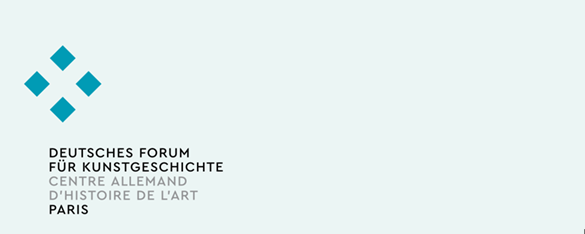
Deadline: Oct 31, 2019
Call for Applications: International Study Course
The Paris World Fairs – (Re-) Productions of Art and Fashion
19th March 2020
Organized by the Deutsches Forum für Kunstgeschichte (DFK Paris) in cooperation with the Technische Universität Darmstadt
Application deadline:
31 October 2019
A total of five world fairs were held in Paris in the second half of the nineteenth century. In the given context of exhibiting industry, attention was accordingly focused on the products of art and fashion which were closely connected to recent developments in serial manufacturing. The exhibiting of the latest technological innovations in areas involving reproduction – for instance in photography, print, readymade clothing, weaving etc. – set in motion key processes in the commercialisation of art and fashion. At the 1855 world fair in Paris, held at the Palais de I’Industrie, the textile and clothing industry had its own large section, featuring prominently alongside industrial products and technological machinery. Not only was the latest weaving machinery presented, but also the first sewing machine by Singer, a connecting link between working at home and the industrial mass production of textiles, between handiwork and the automation of labour. At the same world fair the Parisian clothing manufacturer Opigez-Gagelin & Cie presented the first-ever sewing patterns, called modèles reproducteurs, and moreover won the Grand-Prix medal for its new ready-to-wear dresses (prêt-à-porter), unique in France at the time. Now affordable for the bourgeoisie, this fashion was presented by women at the world fairs, who as consumers now played an important part – and became a favoured subject of the Impressionists. The latter established fashionably-attired women and men as a motif worthy of artistic depiction and combined them with the new kind of iron architecture used at the world fairs, the Parisian boulevards and, somewhat later, the metro, itself opened in the context of the 1900 world fair, and prominently featuring the Art Nouveau style at the station entrances. The Impressionists were also passionately interested in fashion debates played out in the print media, for example in L’Art et la Mode and La Vie Parisienne, and in part directly adopted the fashion designs presented here for their paintings. Impressionism and popular journals therefore played a substantial role in establishing Paris as the city of art and fashion.
The large Parisian department stores, which became established simultaneously with the trade fairs, not only sold fashionable ready-to-wear clothing but also offered reproductions of art, paintings and sculptures in a variety of formats. The aesthetic qualities of the materials used, the question of the surrogate and the relationship between the unique item and the copy were debated in the context of the world fairs, with the art object as an industrial product both celebrated and criticised. A large number of the objects and artworks shown at the world fairs then migrated into the newly-founded museums. Moreover, ethnographical objects from the world fairs became part of the collections in the museums devoted to the ‘colonial’ territories and ethnography. One major example is the Palais de Trocadéro: built for the Paris world fair of 1878, it subsequently housed an ethnographical museum and the respective collections later provided the foundation for the Musée de l’Homme.
A synthesising knowledge of the world was generated at the world fairs of the nineteenth and early twentieth centuries through the encyclopaedic-didactic accumulation of things and objects from a variety of fields (technology, mechanical automation, arts and crafts, the fine arts, portrayal and illustration, ethnography); artefacts gathered from around the world were used to make this knowledge visible and provide visitors with a tangible experience. Replicated on a smaller scale, the dwellings, villages and streets of the ‘province’ or (colonial) ‘foreign lands’ formed the backdrop for the ‘spectacle of the Other’ (Stuart Hall); orchestrated to highlight the richly contrastive aspects and display the folkloristic, it attracted the interest of artists seeking a ‘modern’ vocabulary of forms. The traditional costumes shown can be read as regional and colonial counter-images which served to accentuate the ‘modernity’ of the metropolis Paris.
The study day will discuss how the Paris world fairs were intersection points between art and serial production and how the art and fashion exhibited at the world fairs contributed to producing a perception of Paris as the city of fashion and culture. Of particular interest here are the entanglements with colonialism, which become clearly evident in the fashion and textile production. The relationship between modernity and mass culture, the interaction between everyday objects and art production, and the exhibition and museification strategies pursued will also be considered.
We request proposals for presentations which connect the different fields of art, applied and decorative arts, fashion and technology. We look forward to receiving brief exposés (max. 500 words) for a twenty-minute talk in English and a short CV (max. 1000 characters) by 31 October 2019 at: oesterreich@mode.tu-darmstadt.de
Idea and direction:
Dr Buket Altinoba, Universität Regensburg,
Prof Dr Alexandra Karentzos, Technische Universität Darmstadt,
Prof Dr Thomas Kirchner, DFK Paris,
Dr Miriam Oesterreich, Technische Universität Darmstadt
Location:
Deutsches Forum für Kunstgeschichte Paris
Hôtel Lully
45, rue des Petits Champs
F-75001 Paris
https://dfk-paris.org/de
You must be logged in to post a comment.